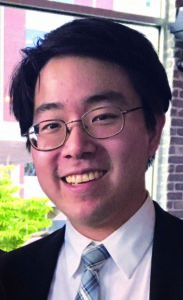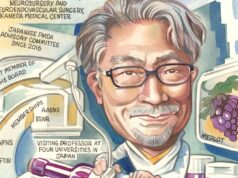Amid the chaos of the pandemic, it is becoming increasingly difficult, “if not impossible”, to care both critically-ill COVID-19 sufferers and non-COVID patients simultaneously, Philip Meyers and Arthur Wang attest. Where minutes can mean the difference between life and death for a patient presenting with stroke, they detail how the current crisis is forcing physicians to make hugely challenging decisions.

The first confirmed case of COVID-19 in New York state was on 1 March, 2020. Since then, New York state and New York City in particular has seen a dramatic rise in COVID-19 cases. The outbreak is on the scale seen in Italy. Similarly, the New York metro area has now become the new epicentre for the COVID-19 outbreak in the USA. This has forced local, state, and federal government officials to issue a “shelter-in-place” order on 20 March for all non-essential people in order to mitigate the spread of the virus.

With a population density of 26,000 people per square mile, New York City is the densest of all cities in the USA. Healthcare in the city is provided through 66 hospitals comprised of a mixture of private and public hospitals. At New York Presbyterian, Columbia Medical Center, we are the largest of the private medical campuses in the city. Since COVID-19 testing became readily available, our hospital has seen a surge in COVID-19 patients to the point that we are now pressed beyond our hospital’s capacity. If one were to walk through the emergency department, a common theme is noticed. Ninety-five per cent of the patients come in with fever and cough. They are immediately placed into isolation rooms away from their families. Anxious physicians and nurses frantically search for an already limited supply of personal protective equipment (PPE) to protect themselves. On top of this, with a limited number of test kits and the delay between testing and receiving test results, many physicians are forced to work in the face of the unknown. Outside of the emergency department, large tents have been erected to add additional space to care for a long line of patients that extend around the block. Every patient has the same story: fever, cough, and shortness of breath.
As the steep upward rise of COVID-19 cases in New York continue, a grim reality has set in at Columbia Medical Center. It is increasingly difficult, if not impossible, to care for both the critically ill COVID-19 patients and non-COVID patients simultaneously. In response to growing demands, Columbia Medical Center has canceled all elective and semi-elective surgeries in order to focus resources on the people, supplies, and physical space needed to care for COVID-19 patients. Our operating rooms and recovery rooms have been transformed into makeshift intensive care units (ICUs) housing upwards of six COVID-19 patients per operating room. Physicians and nurses from different departments have been redeployed to the frontlines of these ICUs to help. As cases continue to rise, all in-patient beds have become occupied, corridors and administrative areas are slowly beginning to be lined with patients, some requiring non-invasive ventilation.
With the continuous stream of COVID-19 patients entering our hospital, it is easy to forget that physicians here at Columbia continue to treat other life-threatening conditions such as heart attacks and strokes. Since the COVID-19 outbreak, the division of neuroendovascular surgery at Columbia has continued to adapt our practice patterns to meet the ever-growing challenges in this age of COVID-19. Every day, the neurointerventional team has to walk the line between caring for urgent neuroendovascular patients and the risk of exposing team members to COVID-19. This delicate balance is performed in the face of PPE scarcity. At Columbia, N-95 masks as well as surgical gowns are in short supply and are often rationed accordingly. To conserve PPE, only essential personnel scrub in the case and staff are given one mask at a time and often re-use masks throughout the week. This scarcity of PPE is compounded by the lack of point-of-care testing on the market. Without immediate test results, the bulk of PPE supply is rationed to the emergency department where physicians and nurses on the front lines desperately need protective gear.
The other immediate challenge is getting used to working with a skeleton crew of staff. No longer do we have the luxury of doing a case at any hour of the day, or with our specific neuro-team. All across the hospital, department chairmen, attendings, fellows, residents and nurses are actively being redeployed to other departments of the hospital, including the emergency department where the daily surplus of COVID-19 patients is outpacing the available manpower. This is further compounded by nurses and technologists calling out sick.
To address the issue of triaging surgical cases, The Centers for Disease Control and Prevention (CDC) recently released a set of guidelines. Given the time-sensitive nature of neuroendovascular procedures, many of our procedures do not fall under the purview of these guidelines. No procedure demonstrates this better than stroke thrombectomy where revascularising a patient’s vessel occlusion means the difference between life and death and where success is measured in seconds and minutes.
While the technical aspects of performing thrombectomy cases has not changed, we are witnessing changes in our perioperative management of stroke patients as it relates to mitigating personnel exposure to potential COVID-19. Often, little is known about a stroke patient’s medical history when they roll into the angiosuite. This is because the time sensitive nature of the thrombectomy often precludes a thorough medical workup of the patient. The uncertainty of a patient’s COVID-19 status on top of the already stressful task of successfully performing the procedure has grown taxing on everyone in the endovascular suite.
When faced with a thrombectomy patient, the endovascular team ranging from the interventionalist to anaesthesiologist to the nurse quickly risk stratifies the patient. The patient is assessed for fever, leukocytosis and other laboratory markers of COVID-19 infection. If family is present, information about travel and exposure history is ascertained. We check the patient’s chest X-ray, if available, or will look at the apical lung fields on the CT angiogram of the head and neck for radiographic clues of COVID-19. With the current lack of point-of-care testing, we often have to go on clinical gut instinct and treat all thrombectomy patients as harboring COVID-19. To further mitigate exposure risk, our threshold for performing mechanical thrombectomy under general anaesthesia is much lower now. Knowing COVID-19 is spread through respiratory droplets and aerosolised particles, an intubated patient will hopefully keep the virus contained within the closed circuit of the anaesthesia machine. Ideally, intubation and extubation is performed in a negative pressure room if possible. While we feel a degree of control over protecting ourselves in this regard, it is sobering to realise that the challenges associated with other daily activities such as touching computers, pushing the button in an elevator, twisting the doorknob, eating lunch in the cafeteria is the real hidden danger.
After thrombectomy, we are encountering challenges finding ICU space in the neurological ICU for the patient where they are historically cared for. Because of the overwhelming number of COVID patients, our 18-bed neurological ICU has been transformed into a COVID-19 unit. In the neurological ICU, a large white erase board has been erected. On the board, every ICU room number is listed. A pattern quickly becomes apparent. Next to each room number is written “COVID” in big red letters with the ventilator settings highlighted. Walking down the neurological ICU, we see intubated patient after intubated patient, all COVID-19 patients, all in acute respiratory distress syndrome, all with a multitude of intravenous medications. From the exhausted and frightened look on a nurse’s face to the ICU resident’s shaky voice, you can see the enormous emotional toll the pandemic has already taken.
Reflecting on the past few weeks and looking into the future, we are faced with a jarring reality. As numbers continue to climb in NYC and through the rest of the USA, we will continue working through resource constraints, uncertainty and fear. Despite all that, the pursuit of clinical excellence continues, and our professional spirit marches on.
Philip M Meyers is a professor of radiology and neurological surgery at Columbia University Medical Center/New York-Presbyterian Hospital, New York, USA, where Arthur Wang is a neurosurgeon who is completing his fellowship training.













